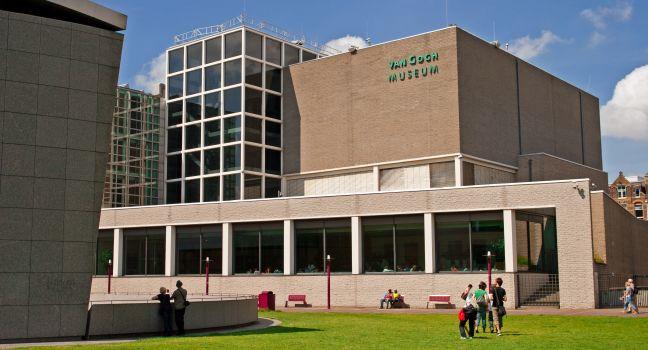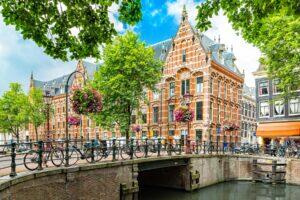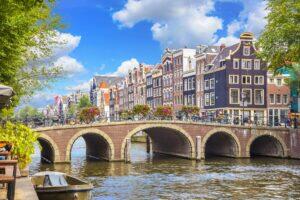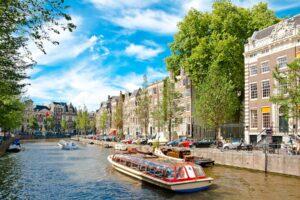Fodor's Expert Review Van Gogh Museum

Opened in 1973, this remarkable light-infused building, based on a design by famed De Stijl architect Gerrit Rietveld, venerates the short and productive career of tortured 19th-century artist Vincent van Gogh. Although some of the Van Gogh paintings scattered throughout the world's museums are of dubious provenance, this collection's authenticity is indisputable: its roots trace directly back to Vincent's brother, Theo van Gogh, who was his artistic and financial supporter.
The 200 paintings and 500 drawings on permanent display here can be divided into five basic periods, the first beginning in 1880 at age 27 after his failure in finding his voice as schoolmaster and lay preacher. These early depictions of Belgian and Dutch country landscapes and peasants were notable for their dark colors and a refusal to romanticize. The Potato Eaters is perhaps his most famous piece from this period. In 1886, he followed his art-dealing brother, Theo, to Paris, where the heady atmosphere—and... READ MORE
Opened in 1973, this remarkable light-infused building, based on a design by famed De Stijl architect Gerrit Rietveld, venerates the short and productive career of tortured 19th-century artist Vincent van Gogh. Although some of the Van Gogh paintings scattered throughout the world's museums are of dubious provenance, this collection's authenticity is indisputable: its roots trace directly back to Vincent's brother, Theo van Gogh, who was his artistic and financial supporter.
The 200 paintings and 500 drawings on permanent display here can be divided into five basic periods, the first beginning in 1880 at age 27 after his failure in finding his voice as schoolmaster and lay preacher. These early depictions of Belgian and Dutch country landscapes and peasants were notable for their dark colors and a refusal to romanticize. The Potato Eaters is perhaps his most famous piece from this period. In 1886, he followed his art-dealing brother, Theo, to Paris, where the heady atmosphere—and drinking buddies like Paul Signac and Henri de Toulouse-Lautrec—inspired him to new heights of experimentation. While heavily inspired by Japanese woodcuts and their hard contrasts and off-kilter compositions, he also took the Neo-Impressionist obsession with light and color as his own, and his self-portraits (he was the only model he could afford) began to shimmer with expressive lines and dots. With a broadened palette, Vincent returned to the countryside in 1888 to paint still lifes—including the famous series of Sunflowers (originally meant to decorate the walls of a single bedroom in the Maison Jaune he had set up to welcome Paul Gauguin)—and portraits of locals around Arles, France. His hopes to begin an artists' colony there with Paul Gauguin were dampened by the onset of psychotic attacks, one of which saw the departure of his ear lobe (a desperate gesture to show respect for Gauguin—in southern France, matadors had ears cut off of bulls and presented them to their lady loves). Recuperating in a mental health clinic in Saint-Rémy from April 1889, he—feverishly, one assumes—produced famous works like Irises and Wheatfield with a Reaper, whose energetic brushwork powerfully evoke the area's sweeping winds. In May 1890, Van Gogh moved to the village of Auvers-sur-Oise, where he traded medical advice from Dr. Paul Gachet for paintings and etching lessons. The series of vibrantly colored canvases the pained painter made shortly before he died are particularly breathtaking. These productive last three months of his life were marred by depression, and on July 27, he shot himself while painting Tree Roots and died two days later.
In 1999, the 200th anniversary of Van Gogh's birth was marked with a museum extension designed by the Japanese architect Kisho Kurokawa, which provides space for superb temporary exhibitions. In 2015, a glass structure was added to create a new entrance hall on the Museumplein side and to connect the original museum building to the Kurokawa wing.
Tickets are timed and can (and probably should) be purchased in advance since time slots fill up very early in the busy seasons.
READ LESS








